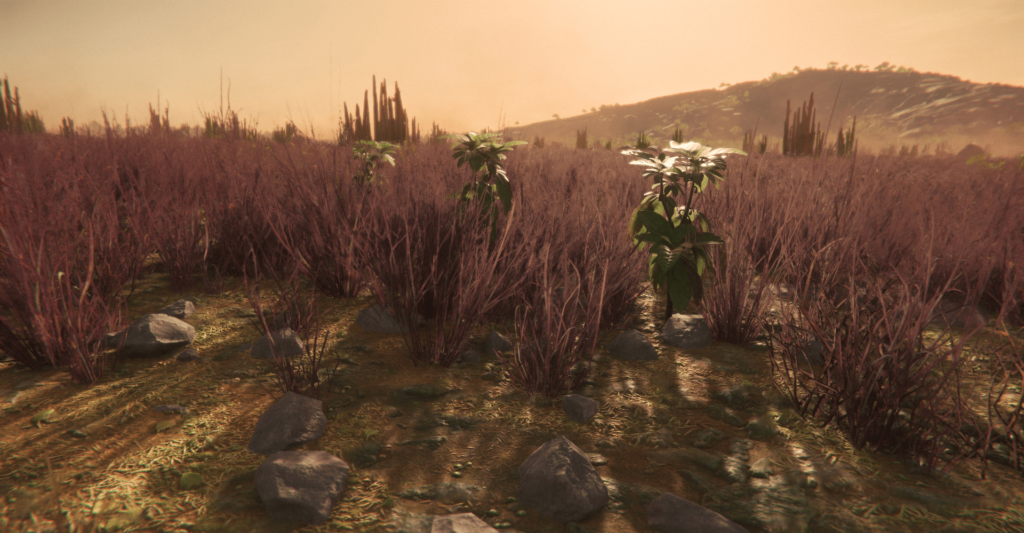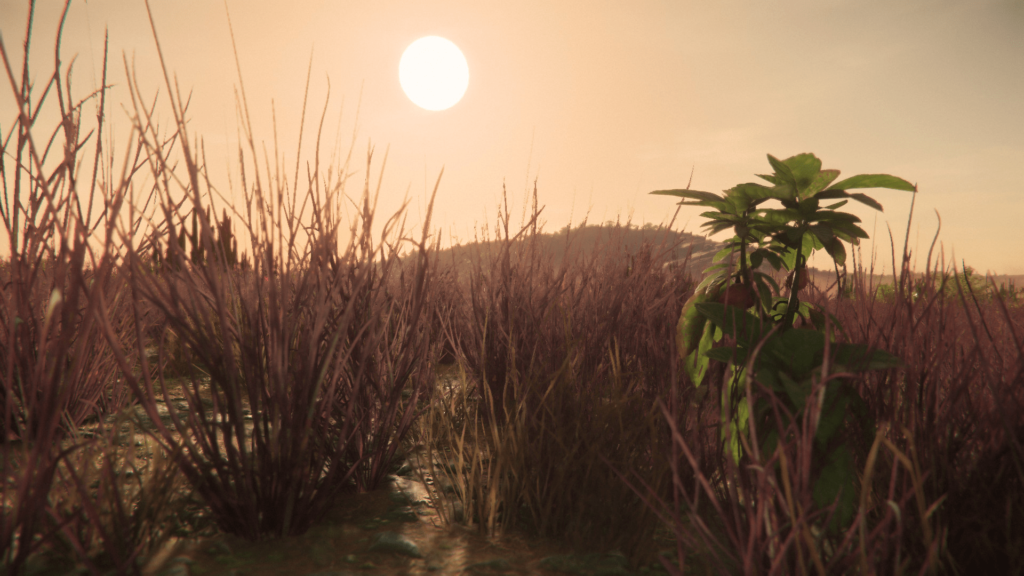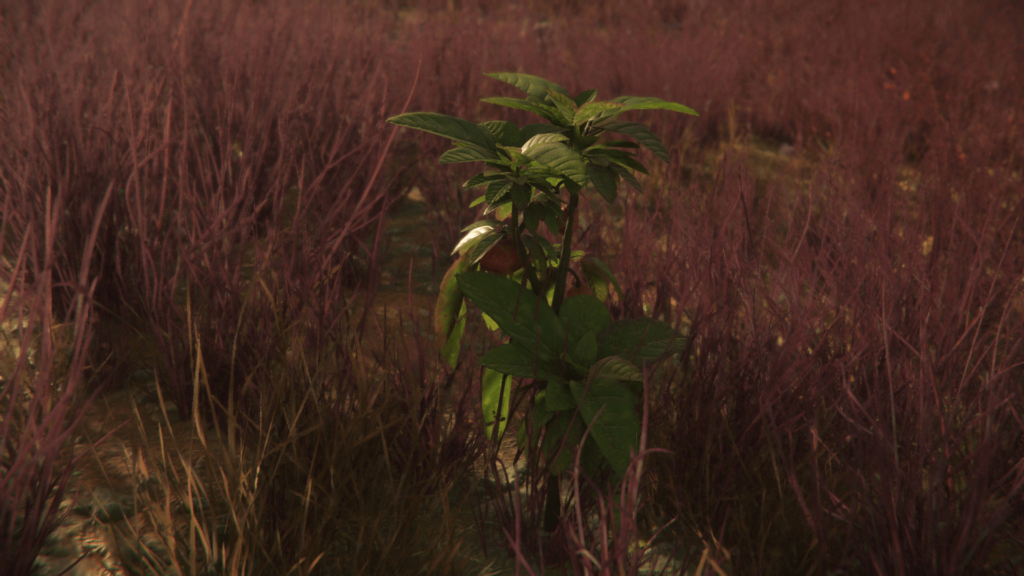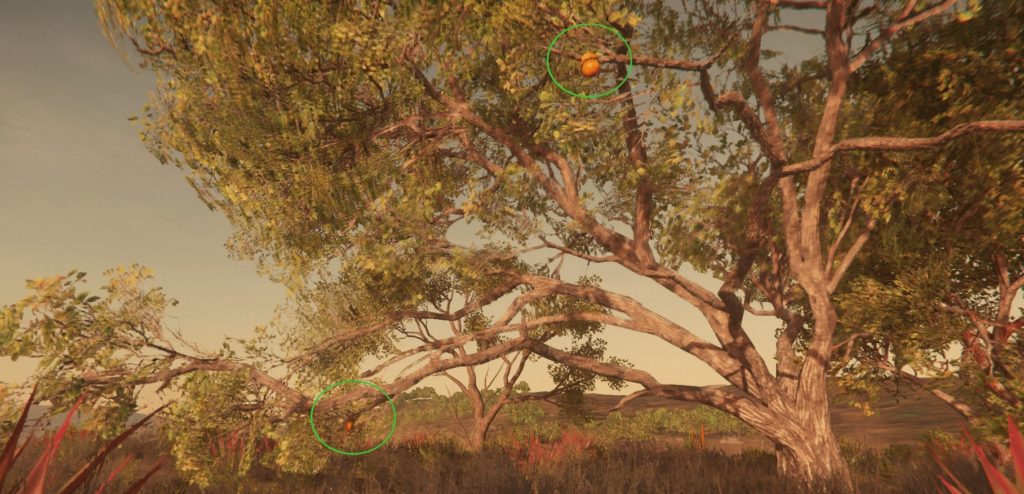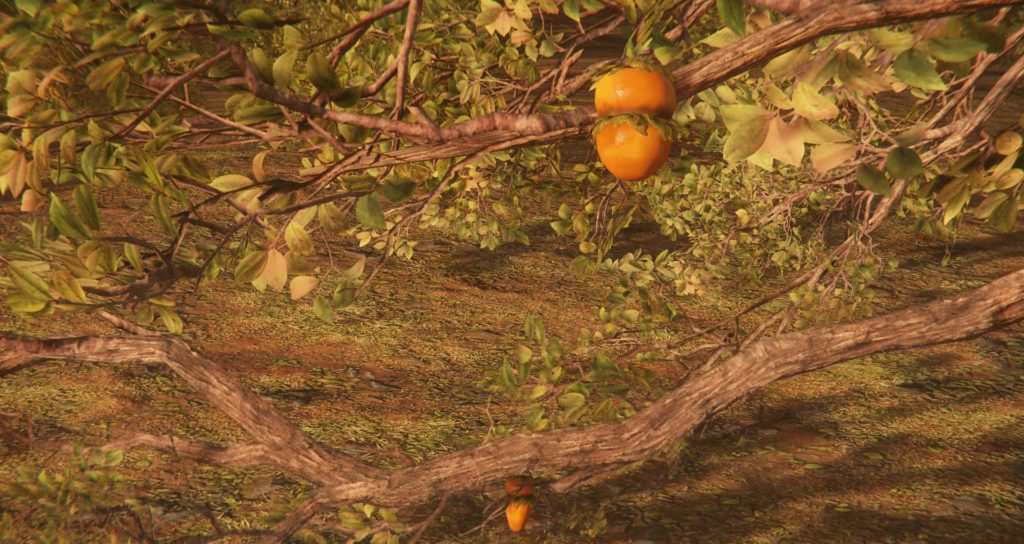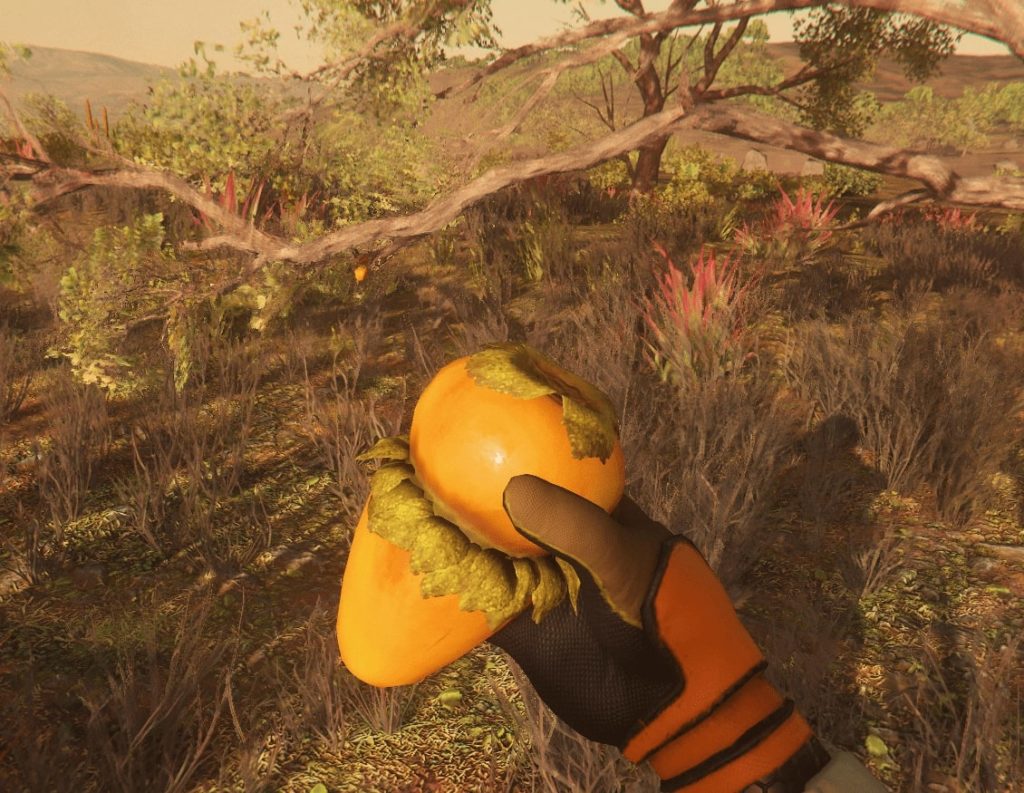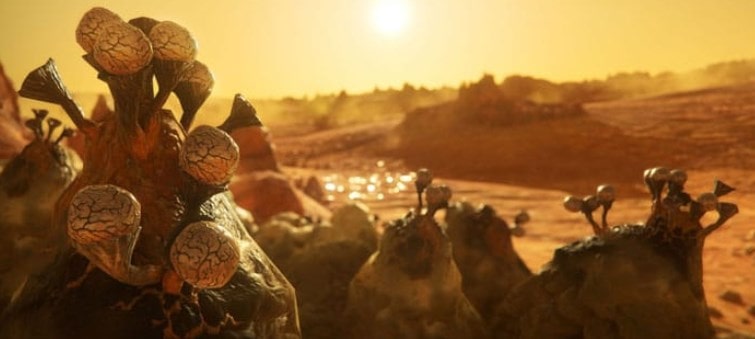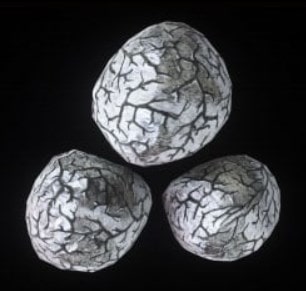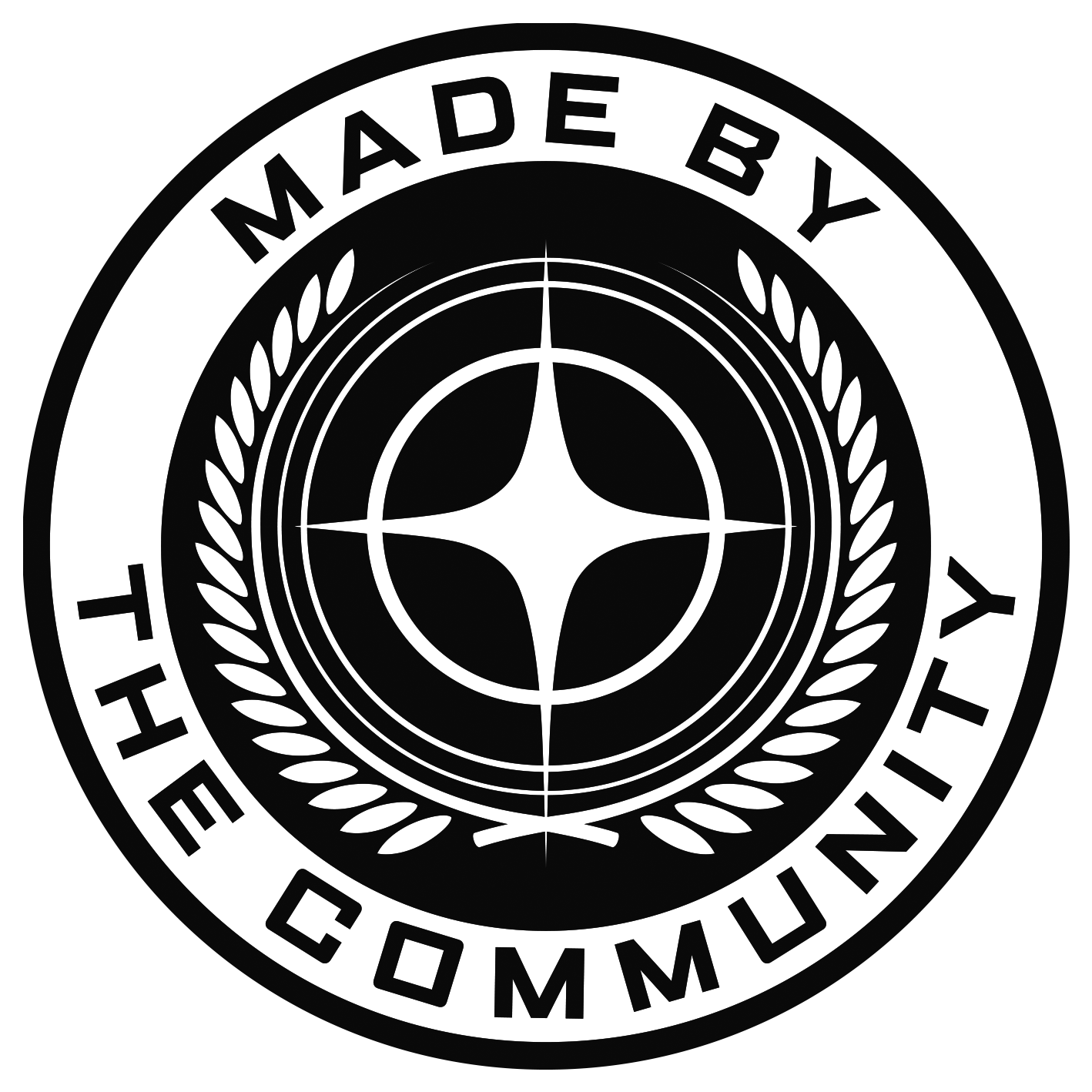PITAMBU
The skin of the Pitambu is thin and waxy and easily peeled away using its green leaf-like growths. Inside is a crisp and watery bright red flesh filled with tiny white seeds that have a mild, nutty taste. The flesh and seeds are traditionally consumed together.
Sold at 16.50Uec/Unit
GOLDEN MEDMONS
Grown in temperate climates on the maru ebony tree, Golden Medmons are left o fall off the tree when ripe and collected. The fruit at that stage is extremly firm and astringent. They only become edible after being ‘bletted’ or softened through ethylene ripening. Once softening begins, the skin wrinkles and darkens, while the inside flesh is loses moisture until it has creamy consistency and a flavor reminiscent of caramelized lactose. This process can confuse those new to medmons, as the bletted fruit looks as if it has gone off.
PROTA
A resilient slime mold that can form in extremely corrosive environments and pressure, prota secretes a strong adhesive that can be distilled into a commercial-grade glue
REVENANT PODS
Contrary to its ominous name, the revenant is actually a variety of the altrucia tree, an indigenous plant of Terra known for its thick and colorful leaves. Geoengineers introduced fields of altrucias to Hyperion in an effort to break up the dust storms. Although the project failed, the altrucia tree adapted to the perpetual wind patterns, shedding its leaves and thickening the wood in the trunk. Botanists initially believed that the atrucia had died, but on closer inspection, discovered that they were quite alive and thus, the name was born. The pods are collected because the pollen is processed and turned into altruciatoxin.
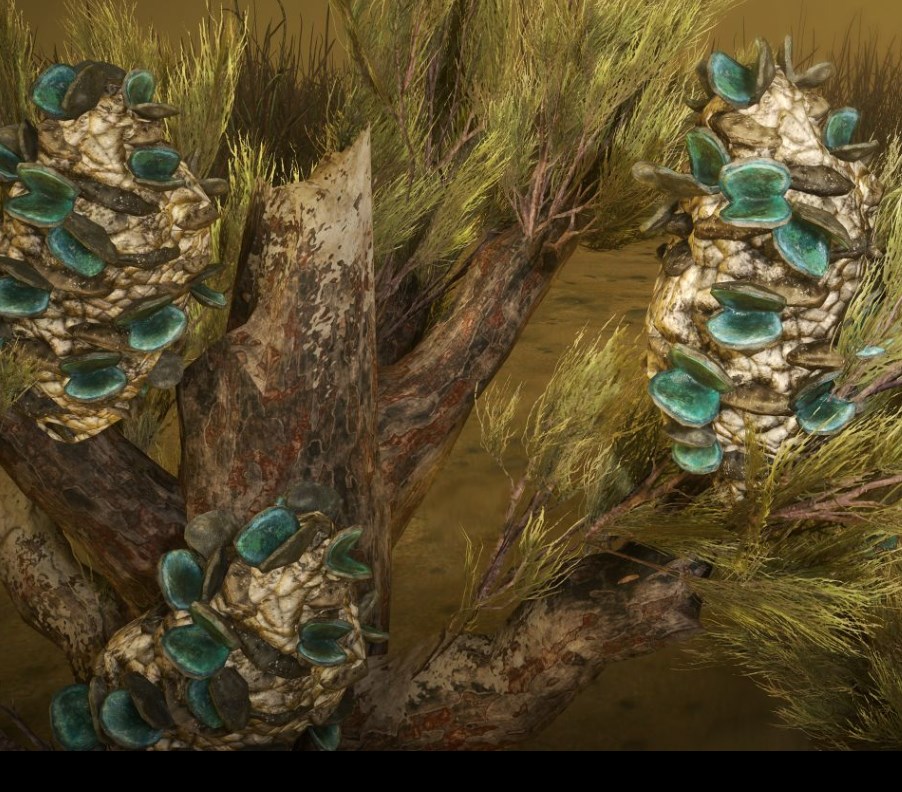
AMIOSHI PLAGUE
Not nearly as ominous as its name, the amioshi plague is an invasive lichen that grows in the cracks of rocks. While the core of the lichen burrows out of sight to try and absorb as much moisture as it can find, the part near the surface sprouts hooded scales that eject spores to spread to other rocks. Its relatively short maturation period is the origin of its name.
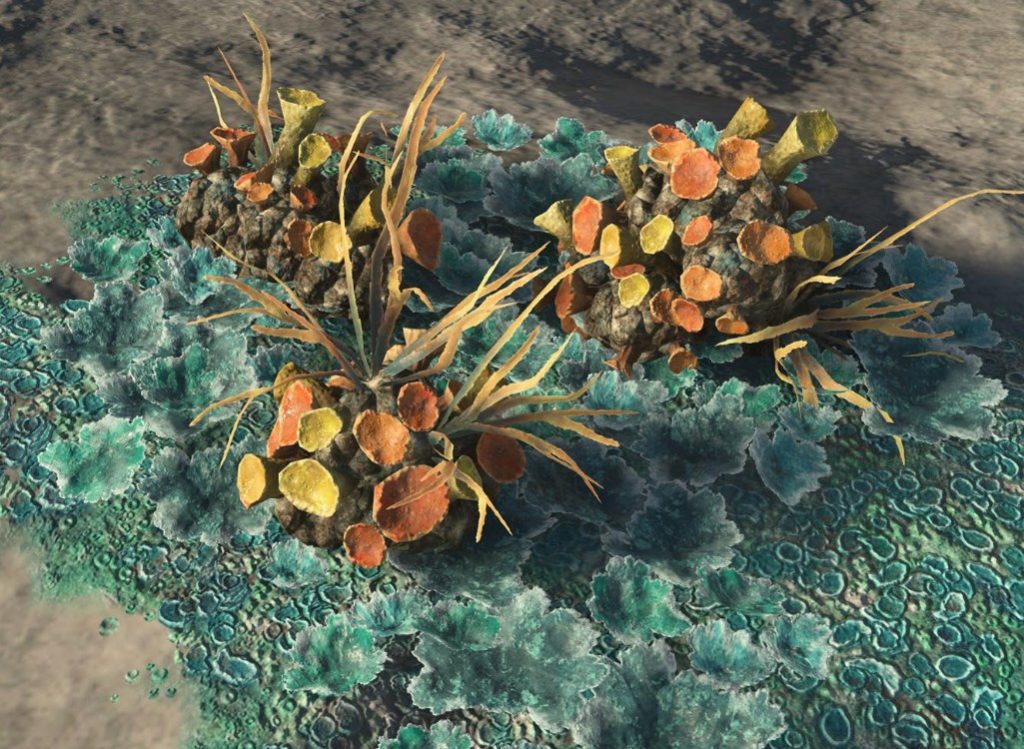
RANTA DUNG
A dry cube-shaped dung that comes from a large isopod-like crustacean known as a ranta. It has recently been discovered that the dung contains a unique bacterial biome that helps the ranta process and digest minerals. Some researches are hopeful it will lead to industrial or medical innovations.
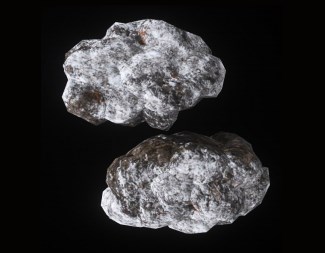
COMPUTER BOARDS
Missing information. Last known location: Hurston.
SUNSET BERRIES
Toxic.
These sunset-hued berries grow best in cold climates. They are toxic and not suitable for Human consumption. Eating them can result in symptoms such as vomiting and extreme cramping. Higher dosages have been known to be fatal. While the raw unprocessed berries are very bitter and tannic, once fermented, the resulting poisonous brew has a very sweet taste and is more commonly known as “Death Wine.” Recently, medical researchers are investigating if the toxin in sunset berries could be used to help treat nerve damage or neurological diseases.
HEART OF THE WOODS
Toxic.
This fungus produces fleshy deep-red caps that grow in a pattern resembling a internal structure of a heart. Found in cold climates, it typically grows on trees and decaying logs. Not yet successfully cultivated commercially, this deep flavored mushroom is prized by epicureans across the ‘verse and can fetch a high price in the right markets. It does contain a mild toxin that is destroyed when cooked, so consuming raw should be avoided.
